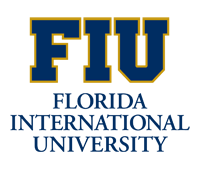Below is a summary of the abstract you submitted. Presenting author(s) is shown in bold.
If any changes need to be made, you can modify the abstract or change the authors.
You can also download a .docx version of this abstract.
If there are any problems, please email Dan at dar78@pitt.edu and he'll take care of them!
This abstract was last modified on April 1, 2025 at 9:37 a.m..

Bacteriophages are viruses that infect bacteria and can serve as therapeutic agents to combat the growing threat of antibiotic-resistant bacterial infections. Mycobacteriophage Typha is a Siphovirus from the Y cluster that infects M. smegmatis. Previous characterization of this phage’s genome (75,687 bp) using bioinformatics yielded 127 genes, 46 of which have known functions. This research contributes to the novel functional annotations of the genes in Typha which expands on prior bioinformatic predictions. Potential relationships between cytotoxicity and gene function are explored, yet many of the cytotoxic genes currently have unknown functions. We investigated the impact of a subset of Typha’s genes on bacterial host M. smegmatis through molecular cloning and cytotoxicity assays. Molecular cloning was used to produce a pure phage gene insert of the correct size. Each gene was amplified by PCR and later incorporated into a pExTra plasmid through a thermal assembly reaction. The cytotoxicity assay included transforming recombinant plasmids into M. smegmatis to examine how individual phage genes affect bacterial growth. Transformed bacterial colonies were resuspended, serially diluted, and then spotted on LB/Agar media containing antibiotic and anhydrotetracycline (aTc). Toxic genes resulted in smaller or absent colonies, while non-toxic genes showed normal growth. Out of the 48 genes screened, 29% were cytotoxic while 61% were non-cytotoxic; the remaining 10% of results were inconclusive and will be repeated. The rest of the genes present in Typha’s genome will be tested for cytotoxicity this coming fall semester. Identifying cytotoxic genes is valuable as they may play a role in hindering bacterial growth and/or altering gene expression, possibly acting as a replacement for antibiotics, further diminishing the overuse of them. M. smegmatis serves as a non-pathogenic model for studying pathogenic mycobacteria such as M. tuberculosis, known for being highly contagious and life-threatening. Understanding the interactions of the phage and the bacterial host further contributes to the research on phage genetics, providing valuable data to develop new treatments for antibiotic-resistant bacteria.








